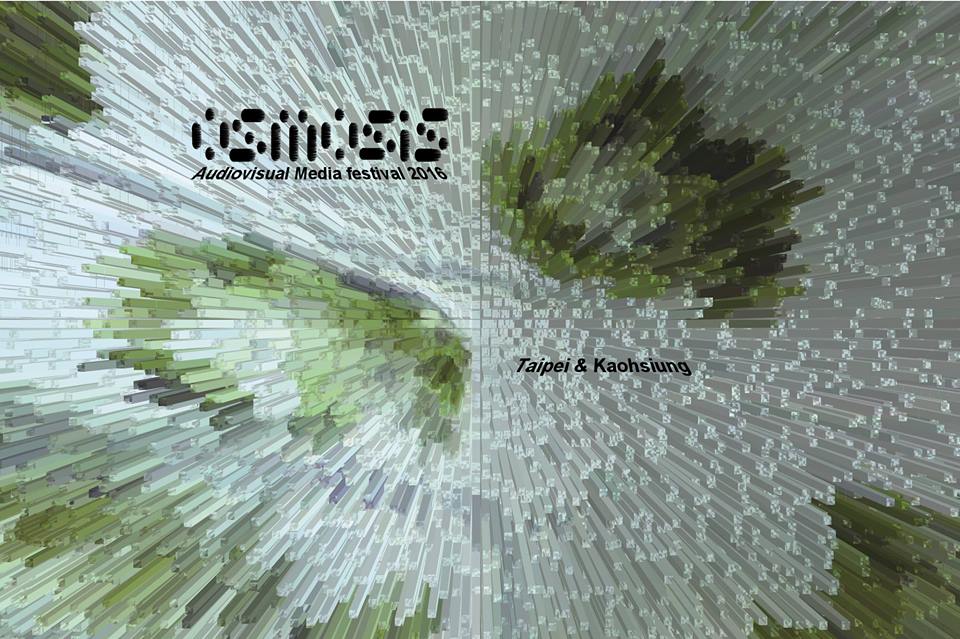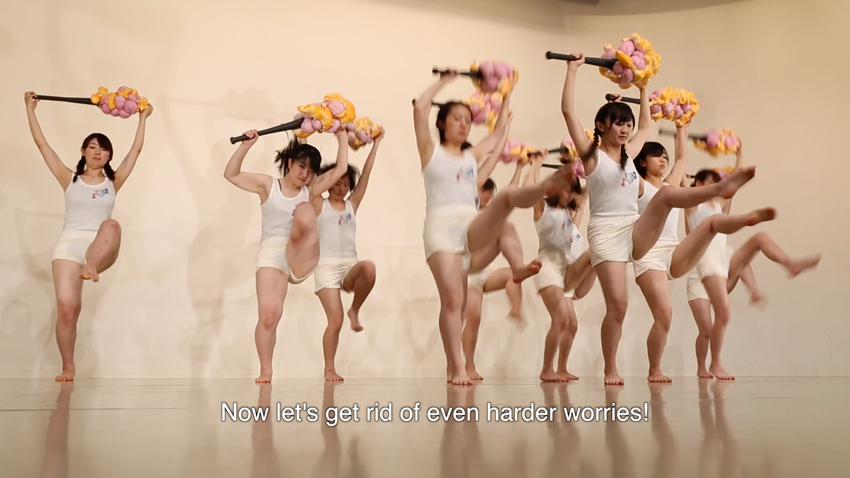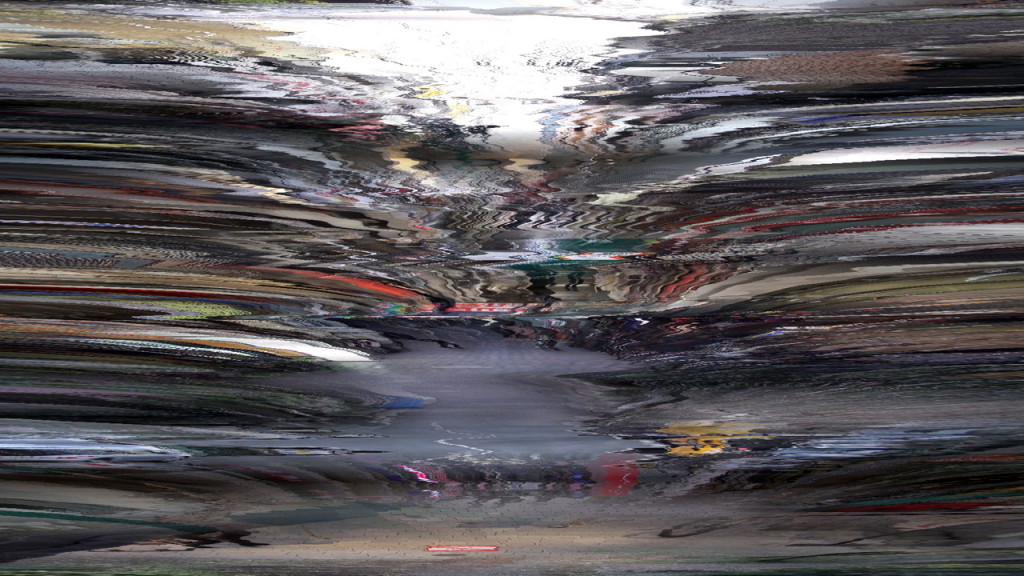台北 Taipei:
8月21日 (SUN)
Venue:台北台電大樓2樓204視聽室 2F – screening room 204, Taiwan Power Company
13:00 – 15:00 Japan Screening Program [IAFT selection] 上映
高雄 Kaohsiung:
8月26日(FRI)
Venue:高雄in89駁二電影院 In 89 PIER-2 CINEMA (C1, C2)
20:00 – 22:30 Taiwan and Japan Screening Program [IAFT selection] 上映
IAFT16 VIDEO screening
IAFT15/16の参加作家を中心にInterdisciplinary Artという観点から選ばれた、よりパワーアップしたラインナップでお届けします。現代アーティストたちの鋭い問いかけに満ちた珠玉の作品です。
Interdisciplinary Art Festival Tokyo is happy to present “IAFT16 VIDEO screening” program that shows the works by the artists who participated in IAFT15/16. These special video works are selected from the point of view of Interdisciplinary Art and full of edgy questions of social issues.
日本東京跨領域藝術節本次帶來2016年的藝術節放映單元,作品包含選自2015-2016參與藝術家。這些特別的影像作品選自跨領域藝術節的觀點,同時對社會議題提出尖銳疑問。
List of artists & works:
1. OKADA Hiroko,EXERCISES, 8min 48sec., 2014
2. HAN Sung Nam, Wearing You, 6min 30sec., 2016
3. WADA Masahiro, KOBU, 20min., 2015
4. NISHIYAMA Shuhei, time strip, 12min., 2016
5. IIMURA Takahiko, MAKING AN AUDIENCE, 12min., 2006/2013
Curated by Sung Nam Han (Interdisciplinary Art Festival Tokyo )
MORE INFORMATION of OSMOSIS fest
→http://ascjoin.wixsite.com/ascool/blank-4
VENUEs and MAPs
→http://ascjoin.wixsite.com/ascool/blank-3
OKADA Hiroko,EXERCISES, 8min 48sec., 2014
ラジオ体操という、戦前から受け継がれ伝えられている日本の(既に伝統的と言っていい)習慣がある。同じ振り付けで合わせて動き、筋肉を軽く鍛えたり、身体をほぐしたりするという、健康維持を目的としたものだ。未だ日本のラジオで毎日放送され、教育の過程では義務的に教えられている。
「EXERCISES」は、ストレス社会を生き抜くための架空のラジオ体操をイメージし、現代の日本人の個々に内包する心理を浮き彫りにした映像作品である。
体操によって心理ストレスが解消されるのか、それともその行為自体がストレス社会を象徴しているのか?
Radio exercises are a traditional – Japanese custom, which has been practiced in successive generations since before World War Two. They are a process of movement together to the same choreography, lightly training the muscles and relaxing the body, with the aim of maintaining good health. They are still broadcast daily on the radio and form a compulsory part of the education process. The film work “EXERCISES” takes the image of fictional radio exercises aimed at surviving stressed society, and in so doing it evokes the particular psychology of contemporary Japanese people.
Are the exercises a way to reduce psychological stress, or do the actions themselves symbolize a stressed society?
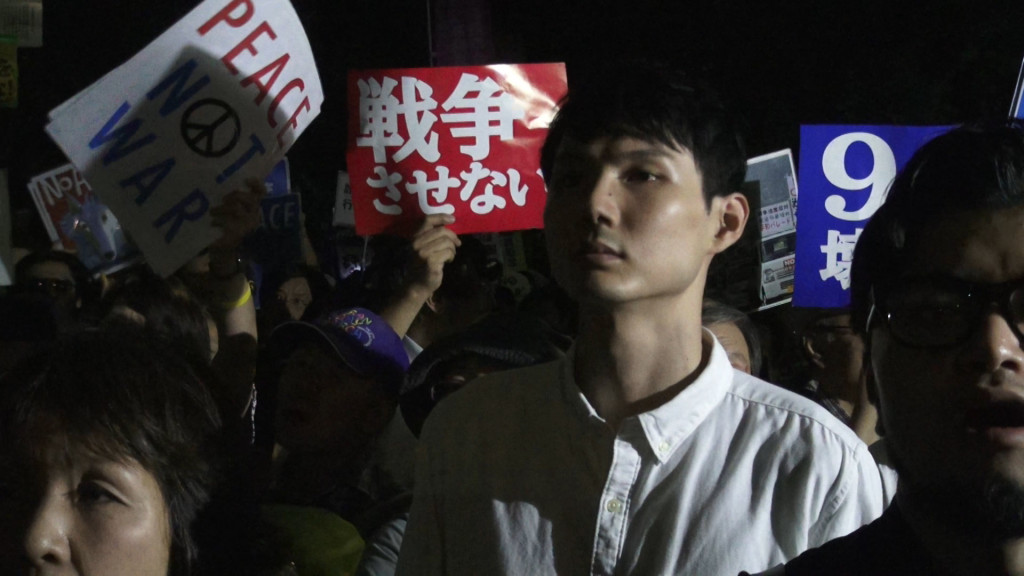
HAN Sung Nam, Wearing You, 6min 30sec., 2016
2015年9月に行われたアートパフォーマンス「あなたを纏う:Bar Drama vol.4」の中から、俳優の動き、声、身体等にフォーカスし再構成した映像作品。
“Wearing You:Bar Drama vol.4” was performed as multimedia audio visual art performance in September 2015. It is edited and mixed to focus on performer’s details such as behavior, voice, body etc. and then reborn a new video art work.
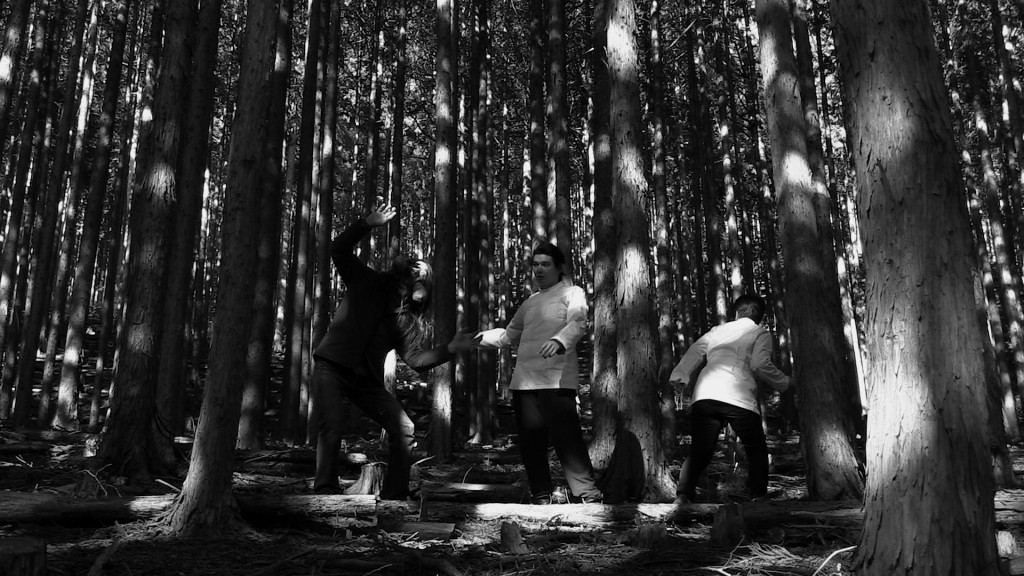
WADA Masahiro, KOBU, 20min., 2015
作品は、日本の昔話である「こぶとり爺さん」にインスピレーションを受けて制作したものです。映像はインスタレーションの一部として使用されていたもので、インスタレーション展示中は、鑑賞者は作品としてマッサージを受けることができます。
I am inspired by Japanese folklore called “Kobutori Jiisan” (The old man who got rid of his lump) to create this work. This film is shown as a part of installation work, and audience could get free massage during exhibition.
NISHIYAMA Shuhei, timeStrip, 12min., 2016
IIMURA Takahiko, MAKING AN AUDIENCE, 12min., 2006/2013
一人のパフォーマーが背中をカメラに向け、スクリーンに映る自分の影に向かって語り始める。彼はひとりの観客であり、同時にパフォーマーとして、二重の役割を演じながらも、自らの影の中にひとりの他者を発見する。さらにイメージは見えないひとりの観客(女性)の声を聞く。
このヴィデオは劇場空間におけるパフォーマーと観客、見る/見られる構造の解体をとおして、映像を媒介とした映画空間の再創造を構築するものである。
A performer stands with his back turned to the camera. He begins to speak to a shadow image of himself projected on the screen. Playing a double role; that is, a spectator and a performer – he discovers ‘the other’ within his own shadow. Besides him, he hears the voice of a female spectator – not shown in the image.
This work recreates the space of cinema mediated by images, by deconstructing the structure of a spectator/performer, and a viewer/viewed in the theatrical space.

